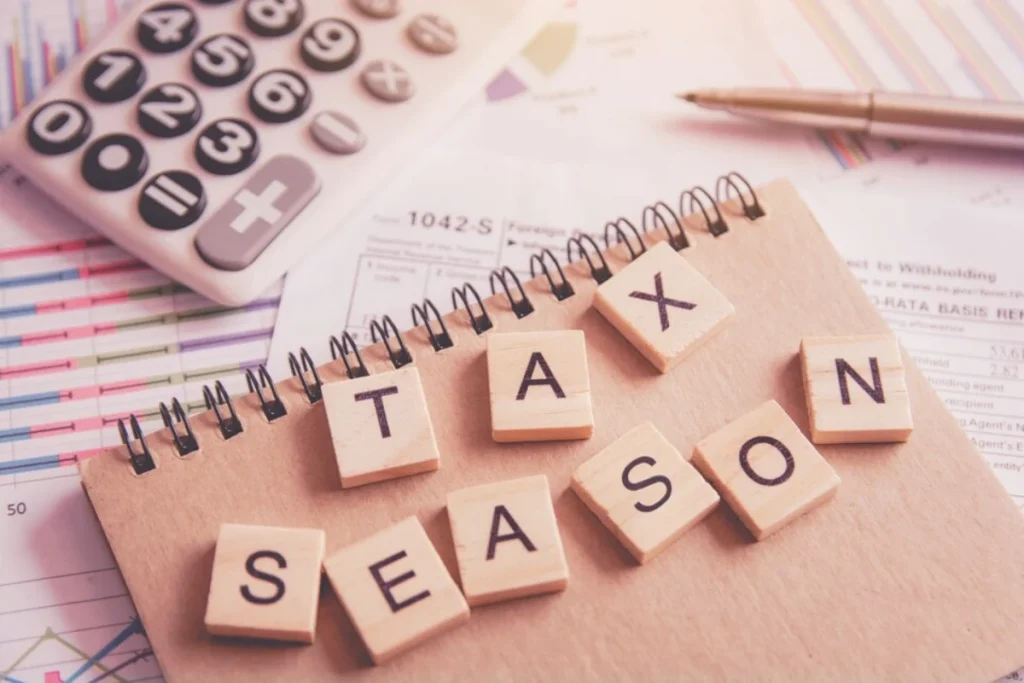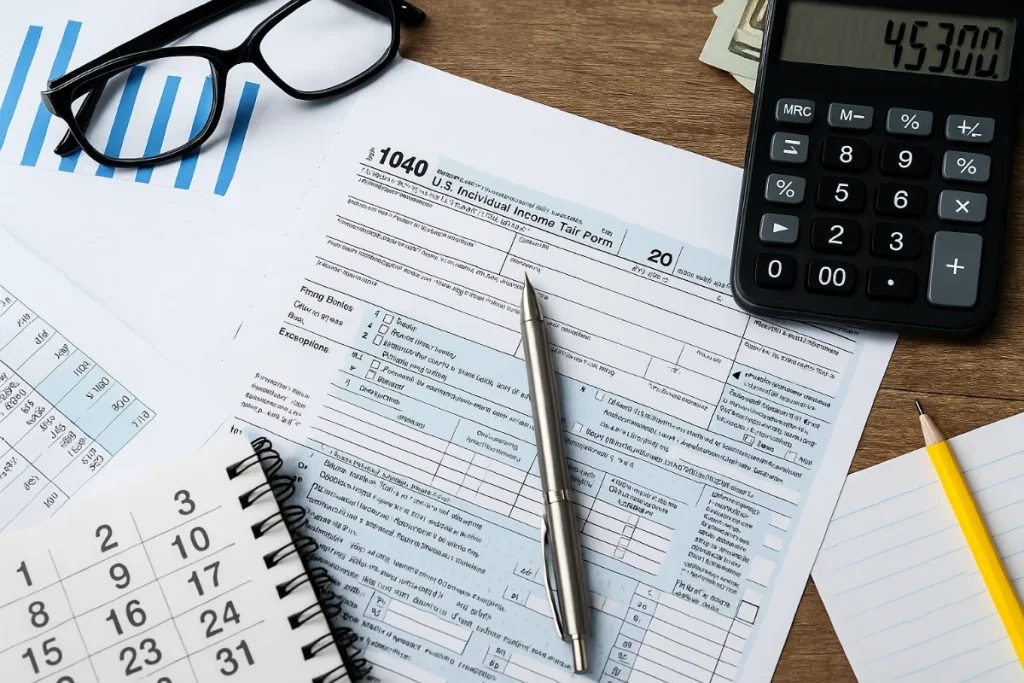Let’s face it—tax season has a way of sneaking up on all of us. One minute you’re setting New Year’s goals, and the next you’re scrambling to find your W-2s. But what if tax season didn’t have to be stressful?
Whether you’re a freelancer, full-time employee, or business owner, a little tax prep each month can save you time, money, and last-minute headaches. This month-by-month guide will walk you through exactly what to do throughout the year, so by the time April rolls around, you’re ready to file confidently—and maybe even get a bigger refund.

Most people don’t start thinking about taxes until late winter. But waiting too long can lead to missed deductions, forgotten documents, and even penalties.
By preparing throughout the year, you can:
January sets the foundation for a stress-free tax season. It’s the perfect time to start fresh with a simple system for organizing all your financial documents.
What to do:
Pro Tip: Use a tax tracking app or spreadsheet to log deductible expenses as they happen.
By now, most tax forms should have arrived, making it the perfect time to start plugging in the numbers and reviewing deductions.
What to do:
If you’re expecting a refund, filing in March can mean faster processing and less stress. It also gives you more time to plan in case you owe taxes.
What to do:
Reminder: E-filed returns with direct deposit are typically processed by the IRS within 21 days.

April 15 is usually the tax filing deadline (unless it falls on a weekend or holiday). If you’re not ready to file, don’t panic—just request an extension.
What to do:
If you received your refund in April, it’s time to make the most of it—and see what you can tweak for next year.
What to do:
Midway through the year is a great time to assess where you stand and make sure you’re on track.
What to do:

If you’re self-employed, a freelancer, or have a side hustle, July is the month to catch up on your records and prepare for your next estimated tax payment.
What to do:
🔗 Helpful link: IRS Small Business and Self-Employed Tax Center
Heading back to school or paying for a child’s education? Now’s the time to make sure you’ll qualify for tax credits.
What to do:
If you’re required to pay estimated taxes quarterly, mark your calendar: September 15 is the due date for Q3.
What to do:
Pro Tip: Even if you plan to file on time next year, skipping quarterly payments can still lead to penalties.

The holidays are coming—but before the year ends, it’s smart to start planning your charitable donations.
What to do:
November is your last full month to make changes that could impact your tax bill. Don’t leave savings on the table.
What to do:
This is your last chance to get everything in order before tax season officially begins in January.
What to do:
📢 Don’t forget: Any deductible expenses must be paid by December 31 to count for this tax year.
The key to a stress-free tax season? A little planning every month. Following this guide can help you avoid last-minute chaos, claim more deductions, and file with total confidence.
Remember, being prepared isn’t just about taxes—it’s about taking control of your financial life.
Tax prep doesn’t have to be a solo mission. At SCL Tax Services, we work with individuals, freelancers, and small businesses year-round to keep you organized, maximize your refund, and eliminate guesswork.
Call us today or schedule a free consultation to see how we can help you get tax-ready—every month of the year.
It helps you stay organized, avoid missed deductions, reduce stress, and potentially increase your refund at tax time.
Ideally in January, but it’s never too late to start a monthly plan to keep your finances in order and reduce tax surprises.
Collect W-2s, 1099s, receipts for deductible expenses, mortgage statements, and charitable donation records.
Track income, log all business expenses, and make quarterly estimated tax payments to stay compliant.
It ensures the correct tax is withheld, helping you avoid owing too much or giving the IRS a large interest-free loan.
Common deductions include student loan interest, mortgage interest, education expenses, business costs, and charitable giving.
We are here to relieve you of the tax pressure by offering a wide range of Tax Services In & Near Bronx, NY. If you need expert advice or need us to complete your taxes, we will provide it for you. We know you work hard, so we work hard to serve your needs.
Your time is valuable, which is why we are here for you.